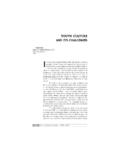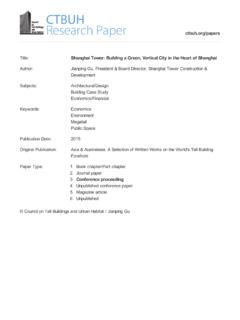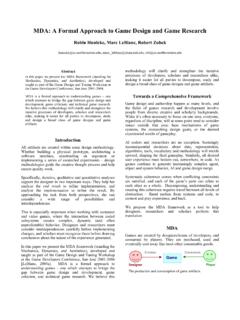Transcription of IGNATIAN PEDAGOGY A Practical Approach
1 IGNATIAN PEDAGOGY . A Practical Approach TABLE OF CONTENTS. PAGE. FOREWORD i INTRODUCTORY NOTES 3. IGNATIAN PEDAGOGY 5. The Goal of Jesuit Education 5. Towards a PEDAGOGY for Faith and Justice 6. PEDAGOGY of the Spiritual Exercises 8. The Teacher-Learner Relationship 9. IGNATIAN paradigm 10. Dynamics of the paradigm 11. An Ongoing Process 19. Noteworthy Features of the IGNATIAN Pedagogical paradigm 19. Challenges to Implementing an IGNATIAN PEDAGOGY 21. Theory Into Practice: Staff Development Programs 23. Some Concrete Helps to Understand the paradigm 24. An Invitation to Cooperate 24.
2 APPENDICES 25. Appendix #1: Some Overriding Pedagogical Principles ( IGNATIAN "Annotations") 26. Appendix #2: " IGNATIAN PEDAGOGY Today". Very Rev. Peter-Hans Kolvenbach, 28. Appendix #3: Examples of Methods to Assist Teachers in Using the IGNATIAN Pedagogical paradigm 38. FOREWORD. The publication of The Characteristics of Jesuit Education in 1986 aroused a renewed interest in Jesuit education among teachers, administrators, students, parents and others around the world. It has given them a sense of identity and purpose. That document, translated into 13. languages, has been the focus for seminars, workshops, and study.
3 Reactions have been overwhelmingly positive. In recent years a question has been heard from diverse parts of the world. How can we make the principles and orientation of The Characteristics more useable for teachers? How can IGNATIAN values be incorporated in a Practical PEDAGOGY for use in the daily interaction between teachers and students in the classroom? The International Commission on the Apostolate of Jesuit Education (ICAJE) has been working for over three years to respond to this question. With help from reactions and suggestions of lay and Jesuit educators the world over, seven drafts were written for this paper introducing the IGNATIAN Pedagogical paradigm .
4 From the outset, however, we were convinced that no document alone would help teachers to make the adaptations in pedagogical aproach and teaching method required in IGNATIAN education. To be successful in bringing the IGNATIAN Pedagogical paradigm into regular use in Jesuit schools, members of the International Commission are convinced that staff development programs in each province and school are essential. Teachers need much more than a cognitive introduction to the paradigm . They require Practical training that engages and enables them to reflect on the experience of using these new methods confidently and effectively.
5 For this reason, ICAJE has worked, from the start, on a project to help teachers. The IGNATIAN PEDAGOGY Project includes: 1) an introductory document on the IGNATIAN Pedagogical paradigm as a development of Part 10 of the "Characteristics"; and 2) a program of staff development at regional, province and school levels. The school staff development programs should last from three to four years in order to enable teachers gradually to master and be comfortable with IGNATIAN pedagogical approaches. To make this project effective and introduce Practical staff development programs at school level, groups of people in provinces around the world are currently being trained in the IGNATIAN Pedagogical paradigm and appropriate teaching methods.
6 Indeed, this whole process was initiated at an International Training Workshop held at Villa Cavalletti, just outside Rome, April 20-30, 1993. Six people from Jesuit education from each continent (a total of approximately 40. people form 26 nations) were invited to be trained, , to learn about, practice, and master some of the key pedagogical methods involved. They, in turn, are preparing training workshops for teams of people from provinces in their areas of the world, who in turn will be equipped to initiate school level staff development programs. i Without the assistance of the training team at Villa Cavalletti and the generous participants in the international workshop there, the process of bringing the IGNATIAN PEDAGOGY Project to our teachers simply would not be possible.
7 I am, therefore, very grateful to all of these people who are truly at the service of Jesuit education worldwide. I offer special thanks to the members of the International Commission on the Apostolate of Jesuit Education who have worked assiduously for over three years - in writing seven drafts of this introductory paper, as well as developing the pedagogical processes which comprise the substance of the IGNATIAN PEDAGOGY Project. Members of ICAJE represent experience and cultural points of view from the farflung corners of the world: Fr. Agustin Alonso, (Europe), Fr.
8 Anthony Berridge, (Africa and Madagascar), Fr. Charles Costello, (North America), Day (East Asia), Fr. Gregory Naik, (South Asia) and Fr. Pablo Sada, (Latin America). In advance, I thank Provincials, their assistants for education, teachers, administrators, members of governing boards whose encouragement and cooperation in this global effort to renew our educational apostolate is crucial. Finally, I acknowledge the generous financial assistance we have received from three foundations which wish to remain anonymous. Their participation in our efforts is a notable example of the interest and cooperation which characterizes the worldwide community of Jesuit education.
9 Vincent J. Duminuco, Secretary of Education Society of Jesus ii INTRODUCTORY NOTES. (1) 1. This document grows out of the 10th part of The Characteristics of Jesuit Education in response to many requests for help in formulating a Practical PEDAGOGY which is consistent with and effective in communicating the IGNATIAN worldview and values presented in the Characteristics document. It is essential, therefore, that what is said here be understood in conjunction with the substantive IGNATIAN spirit and apostolic thrust presented in The Characteristics of Jesuit Education.
10 (2) 2. The field of Jesuit PEDAGOGY has been discussed in numerous books and scholarly articles over the centuries. In this paper we treat only some aspects of this PEDAGOGY which serve to introduce a Practical teaching strategy. The IGNATIAN pedagogical paradigm proposed here can help to unify and incarnate many of the principles enunciated in The Characteristics of Jesuit Education. (3) 3. It is obvious that a universal curriculum for Jesuit schools or colleges similar to that proposed in the original Ratio Studiorum is impossible today. However, it does seem important and consistent with the Jesuit tradition to have a systematically organized PEDAGOGY whose substance and methods promote the explicit vision of the contemporary Jesuit educational mission.








